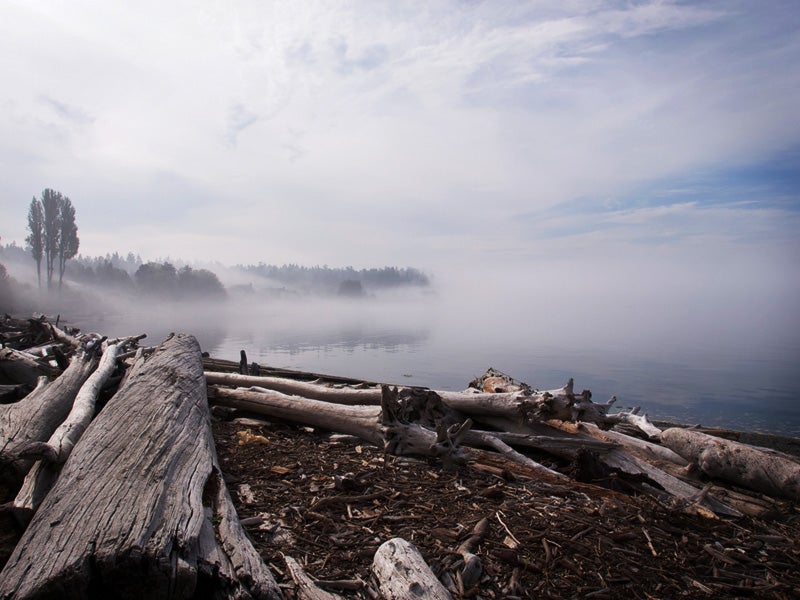Legal Action Armors Puget Sound Against Habitat Loss
The U.S. Army Corps of Engineers is shirking its duty to make sure changes to coastal habitats—including Puget Sound—won’t destroy valuable public resources.

This page was published 10 years ago. Find the latest on Earthjustice’s work.
Puget Sound is one of the nation’s crown jewel waters. It is home to millions of people who live, work and play in and along it, as well as countless species from orcas to octopi. But its ecological health has been steadily declining for decades due to pollution and habitat destruction. Together with its conservation and tribal partners, Earthjustice has made the protection and recovery of Puget Sound one of its signature programs.
Monday we opened a new front in our efforts—tackling the problem of shoreline armoring. Long recognized as one of the most significant stressors on Puget Sound’s threatened ecology, armoring is the practice of modifying marine shorelines with rocks or other materials to interrupt erosion and other changes. But shoreline erosion is part of the natural process of habitat formation that’s critical for species at the base of the food chain. Armoring paralyzes productive and dynamic ecosystems and could lead to additional harm by reducing habitat for prey species and making conditions for salmon and orcas even more unfavorable than they already are.
Roughly a third of Puget Sound is currently armored in some way, and the Puget Sound Partnership—a state agency with a mission to recover the sound—has made a net reduction in armoring a key goal. But that effort isn’t succeeding. Even with significant money spent on removing outdated seawalls and bulkheads, around a mile in total of new armoring is added each year.
One key reason for this slow-motion habitat disaster is the failure of one federal agency, the U.S. Army Corps of Engineers, to meet its obligations under the Clean Water Act. Under the act, placement of “fill” materials (like rocks or concrete) in United States waters is strictly prohibited without a permit from the corps. The permitting process requires the corps to make sure that any such action won’t have adverse effects on public trust resources or the public interest. Moreover, because shoreline armoring in Puget Sound impacts species listed under the Endangered Species Act, such as orca whales and Chinook salmon, an additional layer of federal review ensures that proposed armoring projects won’t set back the recovery of those species.
But the Corps isn’t implementing the Clean Water Act correctly in Puget Sound. It has declared that the limit of its jurisdiction is the “mean” high tide line, rather than the true high tide line. If it sounds like a technical distinction, think again. The difference can be several feet of tidal elevation; on a gently sloping beach, it could mean hundreds of feet of intertidal habitat that should be regulated under the law but are not. And almost all new shoreline armoring takes place above the mean high tide line but below true high tide, meaning it evades federal oversight. Federal agencies like the National Marine Fisheries Service and the EPA have been trying for years without success to force the corps to change its approach to shoreline jurisdiction.
That’s why Earthjustice, on behalf of three Puget Sound conservation groups, filed a formal petition asking the EPA to use its legal authority to order the Corps to start exercising the full extent of its Clean Water Act jurisdiction. A story in the Seattle Times emphasized that federal scientists agree with us. If the agencies can’t resolve the issue internally, we will turn to the courts.
No one is saying shoreline armoring should be prohibited everywhere; there are going to be times when some armoring is appropriate for existing homes and infrastructure. But state scientists have shown that most armoring can be done with less impact or avoided altogether. Full Clean Water Act review will ensure that armoring gets the close scrutiny it deserves in the future, giving Puget Sound’s threatened habitats a fighting chance.
Established in 1987, Earthjustice's Northwest Regional Office has been at the forefront of many of the most significant legal decisions safeguarding the Pacific Northwest’s imperiled species, ancient forests, and waterways.